Related Research Articles
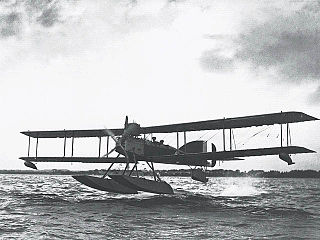
The Short Admiralty Type 184, often called the Short 225 after the power rating of the engine first fitted, was a British two-seat reconnaissance, bombing and torpedo carrying folding-wing seaplane designed by Horace Short of Short Brothers. It was first flown in 1915 and remained in service until after the armistice in 1918. A Short 184 was the first aircraft to sink a ship using a torpedo, and another was the only British aircraft to take part in the Battle of Jutland.

The Avro Type D was an aircraft built in 1911 by the pioneer British aircraft designer A.V. Roe. Roe had previously built and flown several aircraft at Brooklands, most being tractor layout triplanes. The Type D was his first biplane.
The Sopwith Admiralty Type 807 was a 1910s British biplane seaplane designed and built for the Admiralty by the Sopwith Aviation Company.

The Sopwith Admiralty Type 860 was a 1910s British biplane seaplane torpedo bomber designed and built for the Admiralty by the Sopwith Aviation Company.
The Wight Twin was a British large twin-engined aircraft of the First World War. It was a twin-engined, twin boom biplane. One was built as a landplane for France, while three more similar aircraft were built as Seaplanes for the British Royal Naval Air Service. Both versions were unsuccessful and saw no service.

The Short Type 320, also known as the Short Admiralty Type 320, was a British two-seat reconnaissance, bombing and torpedo-carrying "folder" seaplane of the First World War.
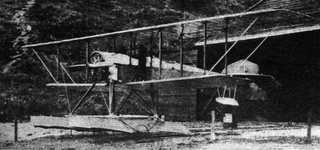
The Blackburn Type L was a single-engine, two-seat biplane built for the 1914 Daily Mail Circuit of Britain seaplane race of 1914.
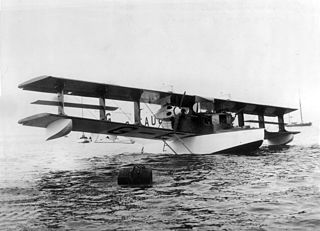
The Saunders Kittiwake was a British amphibian flying-boat built by S.E. Saunders at East Cowes, Isle of Wight.
The Fairey S.9/30 was a two-seat, single-engined biplane built to meet an Air Ministry specification for a fleet reconnaissance aircraft. It flew during 1934-6 in both land- and seaplane configurations. Although only one was built, it was the progenitor of the Fairey Swordfish.
The Avro 528 was an unsuccessful large span single-engined biplane built to an Admiralty contract in 1916. It carried a crew of two; only one was built.

The Sopwith Bat Boats were British flying boats designed and built from 1912 to 1914. A single-engined pusher biplane, the Bat Boat was the first successful flying boat and amphibious aircraft built in the United Kingdom, with examples used by the Royal Navy and by Greece and Germany.
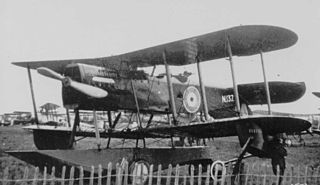
The Parnall Puffin was an experimental amphibious fighter-reconnaissance biplane produced in the United Kingdom just after World War I. It had several unusual features, principally a single central float and an inverted vertical stabilizer and rudder, and showed promise, but at that time no new aircraft were being ordered in numbers for the RAF and only the three Puffins of the initial order were built.
The Short S.6 Sturgeon was a prototype single-engined biplane naval reconnaissance aircraft, built to an Air Ministry specification but mostly intended as a demonstrator of the corrosion resistance of duralumin aircraft structures. Two were made.

The Short S.41 was a British single-engined biplane built for the Royal Navy in 1912. Capable of being operated either on wheels or floats, it was successful enough for a further two similar aircraft to be built, with the type remaining in use until the early years of the First World War.
The Indraéro Aéro 30 is a single seat, single engined sports biplane designed in France in the late 1960s. Only one was built.
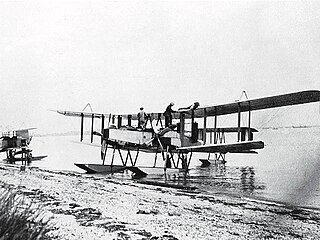
The Blackburn G.P seaplane,, was a British twin-engine reconnaissance torpedo floatplane of the First World War, built by the Blackburn Aeroplane and Motor Co Ltd.
The Sopwith Admiralty Types 137 and 138 were a pair of single-engine, two-seat naval biplane floatplanes, built to a British Admiralty order in 1914. They were similar in design, but having a more powerful engine the Type 138 was the larger and heavier. They were used in early torpedo dropping experiments in 1914.
The Sopwith Admiralty Type C was an early British seaplane designed and built by Sopwith Aviation to drop torpedoes. A single engined tractor biplane seaplane, three were delivered to the Royal Navy in November 1914 but proved unable to lift a torpedo.

The Latham HB.5 was a French biplane flying boat with four engines in push-pull configuration pairs. Ten were used by the French Navy.
The Shirato Iwao-go was Japan's first civil seaplane. It was a single engine biplane floatplane and performed well enough to give a number of exhibition flights.
References
- 1 2 3 4 5 Goodall, Michael H.; Tagg, Albert E. (2001). British Aircraft before the Great War . Atglen, PA, USA: Schiffer Publishing Ltd. pp. 291–6. ISBN 0-7643-1207-3.
- ↑ Barnes, C.H.; James, D. N. (1989). Shorts Aircraft since 1900. London: Putnam Publishing. pp. 95–7, 527. ISBN 0-87021-662-7.